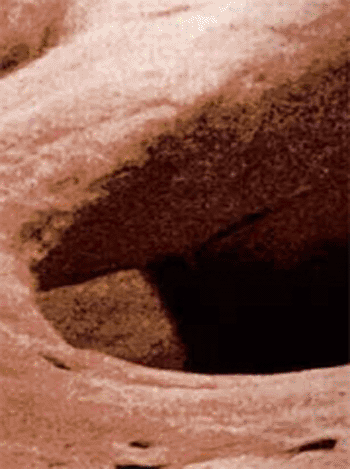Stem Cell Development Could Lead to New Nanoscale Bone Repair Technology
By LabMedica International staff writers
Posted on 27 Feb 2013
British scientists have created a new application to help generate bone cells that could lead to groundbreaking bone repair therapies for individuals with bone fractures or those who need hip replacement surgery due to osteoporosis and osteoarthritis.Posted on 27 Feb 2013
The research, performed by Dr. Emmajayne Kingham, from the University of Southampton (UK), working with colleagues the University of Glasgow (Scotland, UK), and published online January 30, 2013, in the journal Small, cultured human embryonic stem cells on to the surface of plastic materials and evaluated their capability to change.

Image: Stem cell breakthrough could lead to new bone repair therapies (Photo courtesy of the University of Southampton).
Scientists were able to use the nanotopographic patterns on the biomedical plastic to manipulate human embryonic stem cells towards bone cells. This was accomplished without any chemical enhancement. The compounds, including the biomedical implantable substance polycarbonate plastic, provide an available and less expensive way of culturing human embryonic stem cells and presents new avenues for future medical research in this field.
Prof. Richard Oreffo, who led the University of Southampton team, explained, “To generate bone cells for regenerative medicine and further medical research remains a significant challenge. However, we have found that by harnessing surface technologies that allow the generation and ultimately scale up of human embryonic stem cells to skeletal cells, we can aid the tissue engineering process. This is very exciting. Our research may offer a whole new approach to skeletal regenerative medicine. The use of nanotopographical patterns could enable new cell culture designs, new device designs, and could herald the development of new bone repair therapies as well as further human stem cell research.”
This latest discovery expands on the close collaborative research earlier undertaken by the University of Southampton and the University of Glasgow. In 2011, the scientists effectively used plastic with embossed nanopatterns to cultivate and spread adult stem cells while maintaining their stem cell properties, a process that is less expensive and simpler to produce than earlier ways of manufacturing.
Dr. Nikolaj Gadegaard, Institute of Molecular, Cell and Systems Biology at the University of Glasgow, remarked, “Our previous collaborative research showed exciting new ways to control mesenchymal stem cell--stem cells from the bone marrow of adults—growth and differentiation on nanoscale patterns. This new Southampton-led discovery shows a totally different stem cell source, embryonic, also respond in a similar manner and this really starts to open this new field of discovery up. With more research impetus, it gives us the hope that we can go on to target a wider variety of degenerative conditions than we originally aspired to. This result is of fundamental significance.”
Related Links:
University of Southampton
University of Glasgow














